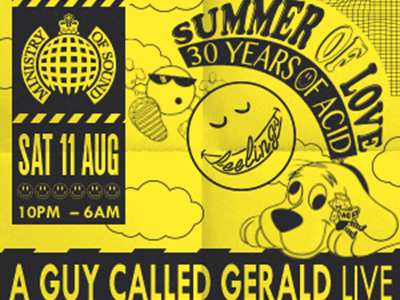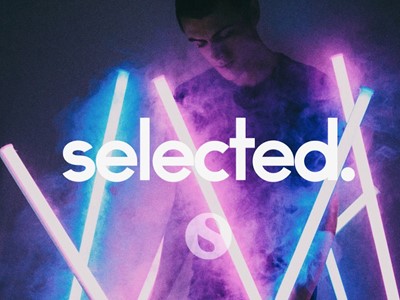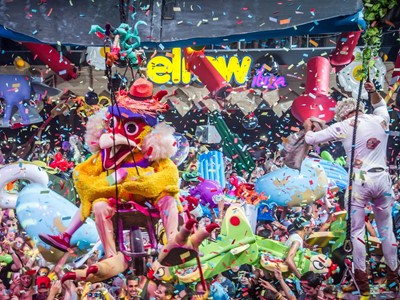A missed opportunity to address dance music's image problem
By now you're probably aware of the fallout from DJ Mag's 25th Anniversary cover. On Wednesday they tweeted out a photo of the cover and asked readers 'what they thought?' And the readers, by and large, thought: 'where the girls at?'
Unlike the majority of the Twitter commenters, I've actually read the issue. Each and every artist on the list deserves their place, many of them played a pivotal role in getting me into dance music to begin with. The feature is a well-written exposé into their many achievements and if you like dance music, you should go read it.
I know from personal experience that when you compile a list of this type, the focus is often on who you left out rather than who you included. But that's not the issue here. The issue is; this was a marquee issue with twenty five spots up for grabs and the result is the same all male, 40+ widely white line up.
When a publication such as DJ Mag uses their mammoth platform to celebrate greatness and only remembers the old boys club, it's incredibly damaging to the scene, not to mention dance music's image problem.
That's why I've set out to use my - admittedly much smaller - platform to highlight just what's wrong with the cover and how detrimental it is when inclusiveness is discarded for recognition.
There Are No Women
An obvious one, but definitely the most important issue at play here. 25 pioneers from the last 25 years and not a single woman. In fact by some miracle, DJ Mag have managed to squeeze in even more men by counting acts like The Prodigy as a single pioneer, bringing the total number of Y chromosomes on the cover to an astounding thirty one. Thirty. One. Thirty One Men and Zero Women. To call it, as DJ Mag's own editor has referred to it, "a sausage fest" is being kind; it's a celebration of sausage, a sausage parade, a foil-coated shrine to sausage.
It's true that historically there have been fewer female artists in the scene, but the past decade especially has seen an influx of female talent. Lets be honest, if Annie Nightingale - the longest serving presenter and the first female broadcaster on Radio 1 - isn't a 'pioneer' then the term is totally redundant, and what about Annie Mac?
There Are No Artists Under 35
Almost as bad as the lack of gender diversity is the total lack of anyone born after 1980. Jamie Jones, the youngest man on the list is hardly fresh faced at 35 years old. Indeed, only three people on the list are under 40. The Average age of the list is a staggering 47.5 years, while the median age is 46. Twelve of the 31 men on the cover are 50+. Obviously with a retrospective list such as this there are going to be a lot of older heads, but come on DJ Mag - has there really been only two dance music pioneers this Millennium? Was dubstep not a thing? Grime? Electroclash? Electro House? Tropical House? PC Music? Fuck it, EDM?
I'm not saying that any of these genres are more or less important than those represented. I'm not interested in playing genre top trumps. I'm just saying that having 12 artists in their 50s and none in their 20s isn't exactly progressive.
It's Geographically Limited
Twenty five pioneers and only five countries represented. America, France, Germany The Netherlands and The UK are clearly the countries that have birthed the most dance music artists, but this was a golden opportunity to showcase lesser known artists that have had massive impacts in their own country and beyond. Names like Ricardo Villalobos, Black Coffee, Hunee and Aly & Fila immediately spring to mind. The point here is that while you're always going to have to do a toss up between people like Villalobos and Hawtin, maybe, when you've already got double digit Brits, just maybe, you should choose the South American.
The fact that whole continents are absent is almost as shameful as the total lack of women. DJ Mag is a truly global publication, this was the perfect chance to celebrate artists from countries outside NATO.
Their Excuse Stinks
Their first comment on the issue was simply: "The final list of 25 was the result of much debate in the office, and you may notice just from glancing at the cover that there are no women in the 25 — a fact we're all too aware of at DJ Mag. Is there anyone we should have included? And if so in place of who?" When they realised that wasn't enough, their editor wrote piece for The Huffington Post titled, 'Who Are The Women Pioneers Of Dance Music'. Aside from the slightly incendiary title, the apology is buried eight paragraphs in, with the first seven devoted to explaining just how difficult it would've been to include even a single woman, using the criteria that they had set for themselves.
Their criteria states that the artist must have appeared on the cover of DJ Mag and been active during the past 25 years. This limits the options, sure, and I'm not about to sift through 25 years of covers, but surely one or two women, or people under 35, or people from continents other than Europe and America would fit the bill.
Carl argues that if he included Sister Bliss, then he wouldn't have been able to include Liam from The Prodigy. But to echo the previous point, if it's a toss up between a man and a woman and you already have 24 men, maybe pick the woman. It's not about if Bliss has done more or less than Liam, it's about if a young girl getting into DJing looks at the cover of your magazine, sees 31 men looking back at her and thinks 'this scene doesn't want me.'
It's A Missed Opportunity
DJ Mag is arguably the worlds biggest dance platform. They have an eye-watering social following and the print magazine is stocked throughout the world. Their Top 100 DJs List, whilst regularly criticised, is the biggest of it's kind. Fees go up with placements and even artists and publications that deride it, are still talking about it. I guess this is the crux of my problem with DJ Mag and their lists, they persistently refuse to use their huge platform to push the narrative forward. Sure they released their Women In Dance Music special, but did this have half the eyes on it as their flagship women-free-zone Top 100, or this 25th Anniversary Issue?
It's all very well saying you want to champion progress, but if you really want to help, maybe put some women on the cover of your biggest issues? It's not rocket science. Let me be clear: any print publication that has managed to weather the turbulent media landscape for 25 years should be celebrated. There are a great many things that DJ Mag do well, it's just a shame that challenging the status quo isn't one of them.
Follow Matt on Twitter



